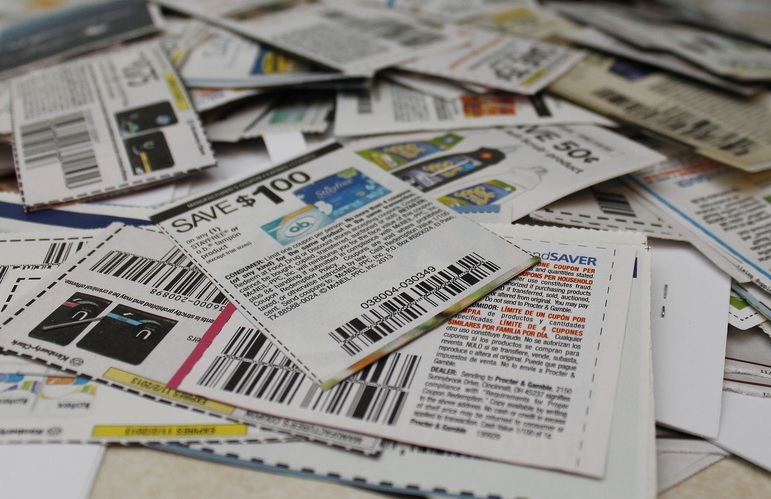Year after year, coupons have gotten worse as the economy has gotten better. It seemed an economic downturn might be the only thing that could give couponing a much-needed boost.
Well, be careful what you wish for. The economic downturn is here – and the only silver lining for savvy shoppers is that couponing could be ready for a comeback.
As they try to navigate their way through the economic challenges caused by the coronavirus pandemic, retailers, brands and marketers are attempting to predict the future by looking to the past. The Great Recession of 2008-2009 could provide some clues as to how shoppers and sellers will behave in the coming months, or years.
In the latest in a series of coronavirus-related reports, the market research firm IRI looked at how we reacted to the last recession a dozen years ago, for an idea of how we’ll react to the economic challenges in 2020 and beyond. Among their findings – we used more coupons, sought out more deals and saved more money in 2008 and 2009. So if those things appeal to you, good news – sort of. The dreadful economy means coupons and deals might actually start getting better!
IRI dug up a survey that it conducted back in 2008. It found that more than half of shoppers making under $54,000 a year said “I am using more coupons than I used to.” As income levels went up, that percentage went down, but not by much – even among those making more than $100,000, a third said they were using more coupons, too.
That’s in line with coupon usage figures from the time. According to Inmar, the overall number of coupons used annually had held steady at 2.6 billion for years, until it shot up to 3.3 billion in 2009 – a 27% increase. That number peaked at 3.5 billion in 2011, at the height of the “extreme couponing” craze, before beginning a slow and steady decline in inverse proportion to the improving economy. Coupon use bottomed out, so far, at 1.7 billion in 2018 (figures for 2019 have not yet been released, but are expected to be even lower).
Coupon distributors responded to the increased interest by issuing more coupons. While 287 billion coupons were distributed in 2008, that number soared to 336 billion in 2010. The most recent figures show that number declined to a mere 267 billion in 2018, well off its recent peak.
So if the past is prologue, an increased interest in coupons could lead to an increased number of available coupons.
Of course, this recession is not like your “usual” recession. While the economic downturn that began in 2008 was great for coupons, our current economic downturn has been anything but. The initial rush to stock up on necessities, no matter the price, and the subsequent cutback in the number of grocery trips most of us have been making, means that couponing has been the last thing on most shoppers’ minds. Some stores have quit accepting paper coupons in certain circumstances, while one coupon clearinghouse had to scramble to find a way to process the coupons that stores do accept. And many retailers and brands have been reluctant to offer big discounts that are meant to drive shoppers into stores, because attracting crowds is not what anyone wants to encourage right now.
So don’t expect to see a surge in high-value coupons bursting forth in your Sunday newspaper right away. Or at all. Because some believe this could be digital coupons’ moment. Paperless coupons weren’t nearly as widespread back in 2008 as they are now. And they have advantages that are specific to our current challenges – they don’t have to be handled or processed in the way that paper coupons do, and rather than encourage you to rush to the store, they can influence your purchase decisions after you’re already there.
Some shoppers who are not inclined to clip coupons at all – digital or otherwise – are likely to seek out other, more efficient ways to save money. More than three-quarters of lower-income shoppers told IRI in 2008 that “I am more likely to look through retailer ads to find deals.” And nine out of ten said “I am more likely to look for sale prices throughout the store.”
Once our grocery shopping habits get back to normal, and we have some sense of whether the economy can bounce back or will take longer to recover, we’ll be able to see just how good the savings will get. It’s just too bad it took a global pandemic and an abrupt economic decline for the coupons and deals to finally start getting better.

















i think things will get better. If you call Hanover Foods in PA and Ocean Spray, they will mail you coupons. Coupons and you may know this come out in the Sunday paper (Sat in Baltimore and DC). If you have a great edition, you can buy papers no more than $1 at Dollar Tree–DC Post not sold there. Sometimes if you call Wegmans, they will mail you a $5 off $25 coupon. Giant will accept these. If I could ask where do you live? But coupons will be short until supplies replenish. There is also ways to save on sales tax.
I hope this is true but right now I am noticing a shortage of coupons in the inserts for example i did not general mills yet in may. I also noticed stores not having sales in the way they did pre covid my safeway weekly ad was very small and the monthly ad had some things but no where near as much as normal I would love to get you opinion on this and when you think things will be back to normal if not better.
I don’t know if you are going to address rainchecks. CVS has no expiration dates and says so on the rainchecks–and will accept coupons with rainchecks.
Giant and Martins will accept rainchecks even if they are old–and coupons with rainchecks. For those people who have Riteaids and will be converting to WG, ask about the Walgreens flyer which has 30% coupon on it. You must get this before they become WG and use it afterwards at that store (usually good for 30-45 days after becoming WG).